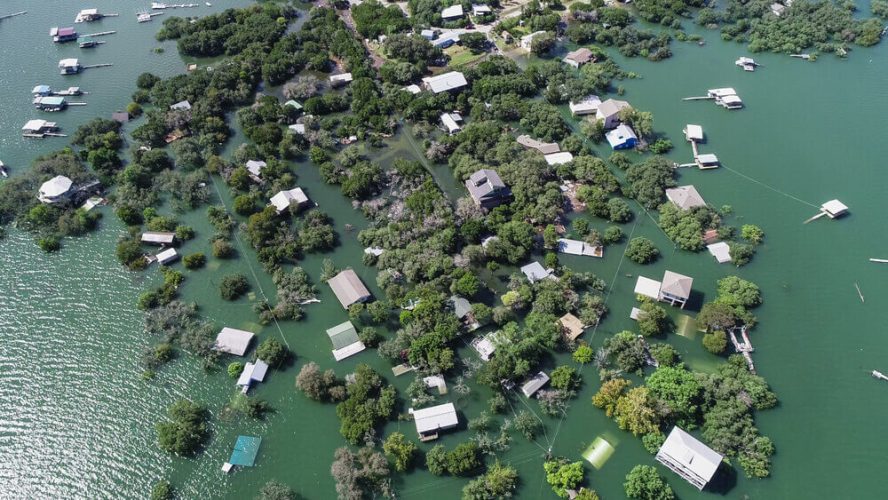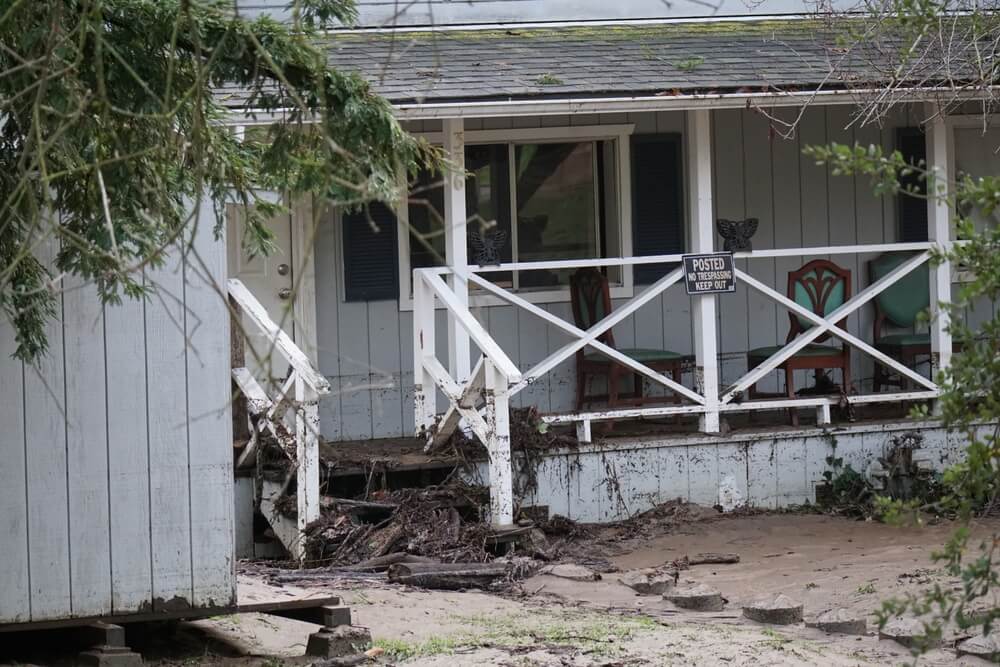
Waterfront properties are highly desirable but can also come with a catch — the chance of flooding. When searching for a new house, planning ahead is important to avoid paying for costly repairs on your own. That involves determining the risk level of any home you’re considering buying and researching what homeowners insurance options will keep you fully covered. It’s also essential to determine if your house is in a flood zone and if you’ll need flood insurance to protect your assets fully.
By learning how to identify if a home is in a flood zone and exploring the meaning of different FEMA categories, you can successfully mitigate the risks of buying a house in a flood zone.
Navigating the Waters of Flood Zone Home Purchases
If your dream house happens to be in a flood zone, you don’t have to panic. Even though these homes have special considerations, planning and getting comprehensive insurance coverage can help you combat the potential drawbacks. However, it’s still important to be informed about the risks of buying a high-risk property to make an informed decision about your future home.
Key Factors to Consider Before Buying a Flood Zone Property
The biggest drawback of buying a house in a flood plain is the potential for costly repairs from flooding and water damage. However, some homes have built-in protective measures. For example, many houses in these areas are elevated or have strategic landscaping that guides runoff away from the home. As you research potential properties, look for helpful features like sump pumps, foundation vents, and foundation sealants. You can also inspect the home for signs of water damage from previous floods in the area.
It’s also important to consider the severity of flooding in your area. The term “flood zone” can encompass several levels of flooding risk. Some homes may be in a high-risk zone with a high chance of flooding, while others may have only a minor chance. Determining the exact categorization for your future home is essential for purchasing the right level of insurance coverage.
Finally, you should be prepared for higher insurance costs when purchasing a home in a high-risk area. Research average insurance costs in your neighborhood to determine if the added cost is feasible. You should also talk to your insurer ahead of time to confirm they offer coverage for that property and determine if their policy options meet your coverage needs.
How to Determine a Property’s Flood Zone
As soon as you pick out a potential property, ask yourself: Am I in a flood zone? Some houses, such as those along the coast, may have a clear flooding risk. But others may not be so obvious. Researching your home’s official status can help you understand if you’re at risk of flooding.

How to Read FEMA Flood Zone Maps
So, how do you know what zone you are in? The Federal Emergency Management Agency (FEMA) keeps track of the risk level of homes in different areas. You can use its convenient online tool to see the flood maps for your area. The map will come with a key explaining the risk level of your area.
The areas with the highest risk level are known as Special Flood Hazard Areas (SFHAs). If your home is in an SFHA, FEMA has determined that it has at least a 25% chance of flooding during some point in a 30-year mortgage period. You may be legally required to buy flood insurance and meet certain flooding management rules when purchasing a home in an SFHA.
Non-SFHA properties fall into two categories: minimal and moderate risk. Areas with moderate levels of risk are usually labeled Zone B and are shaded on a map, while areas with minimal risk will be labeled Zone C or X and are unshaded on a map. You may also see areas marketed as undetermined. If an official analysis hasn’t been conducted in your area, it’s important to be proactive and do research on your own.
Evaluating the Flood History of Your Prospective Home
Assessing the weather history in your new neighborhood can help you get a better idea of your home’s flooding potential. If your area is listed as undetermined on a FEMA map, you’re likely wondering, “Is my home in a flood zone?” Luckily, you can look up historical flooding information on your own to see if you need to secure extra insurance.
Even if your new address does have a FEMA designation, it’s still a good idea to do outside research. In some cases, you may even be able to reduce your insurance rates if you can argue that the official designation is no longer accurate. For example, faulty FEMA zone maps have previously caused homeowners in certain areas to purchase unnecessary insurance. You have the ability to go on the FEMA website and ask to change your flood zone designation. Verifying your categorization’s validity can ensure you have adequate coverage if there is a high chance of flooding and protect you from extraneous insurance costs if the risk is overstated on the FEMA map.
The Difference Between Flood Insurance and Homeowners Insurance
One of the things you should know as a first-time homeowner is that water damage from floods is one of the most common exclusions on home policies. This is especially true in high-risk areas like flood zones. Supplementary insurance protects your home and belongings in case of storm damage.
Financial Implications of Flood Zone Properties
Buying a home at risk from floods may have some unexpected financial consequences. Even if a serious weather event never impacts your home, you should still understand how flooding can affect your home’s long-term value.
Understanding the Impact on Mortgage and Home Value
Because of the drawbacks associated with flooding, homes in flood plains may be cheaper than similar homes in low-risk areas. However, waterfront or coastal properties with a high risk of flooding can still be quite expensive due to their scenic location. If flooding does occur and damage your home, you can expect its value to decrease significantly — regardless of its initial value.
Resale Considerations for Homes in High-Risk Areas
Flooding can be unpredictable, which can make it challenging to resell homes with a high risk of flooding. If the property already incurred water damage, potential buyers may be concerned about future repairs. They may also worry about the increased possibility of flooding from rising sea levels and nearby developments. Carefully balance the potential demand for homes in your area with the drawbacks of owning a home with a high chance of experiencing water damage.
Top Considerations When Choosing a Flood Insurance Provider
At Freeway Insurance, we are known for our competitive rates on both comprehensive homeowners and flood insurance. So, if you have your heart set on a home that’s at risk of flooding, we’re the right insurance provider to help protect your property and peace of mind. Freeway also offers a coverage limits so you can customize your policy based on your home’s unique risk level. When equipped with a Freeway policy, you don’t have to let the chance of flooding hold you back from purchasing your dream home. Meet with a knowledgeable agent at a Freeway Insurance office in your area, get your free quote from Freeway Insurance online, or call 800-777-5620 to learn more about how we can help you secure your home.


